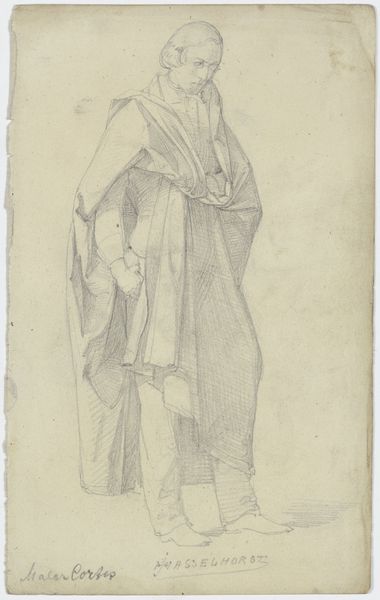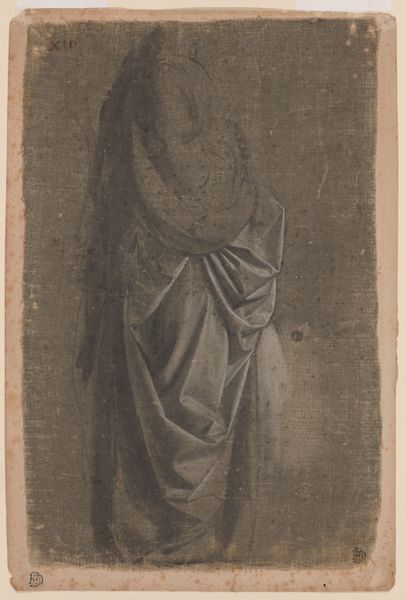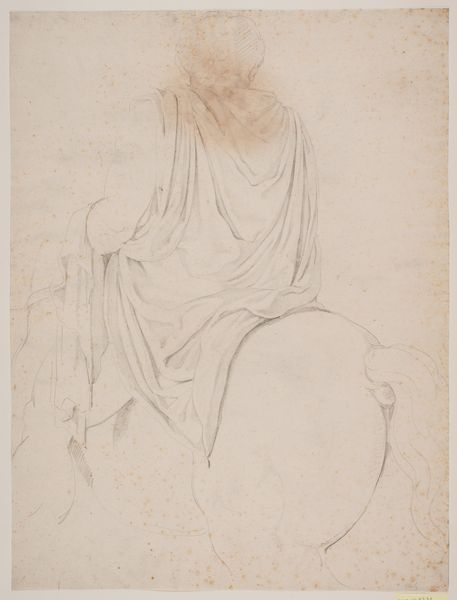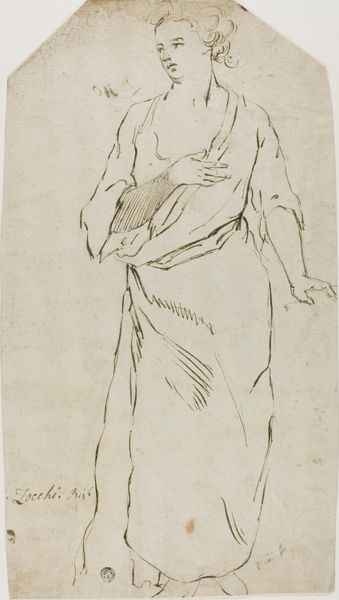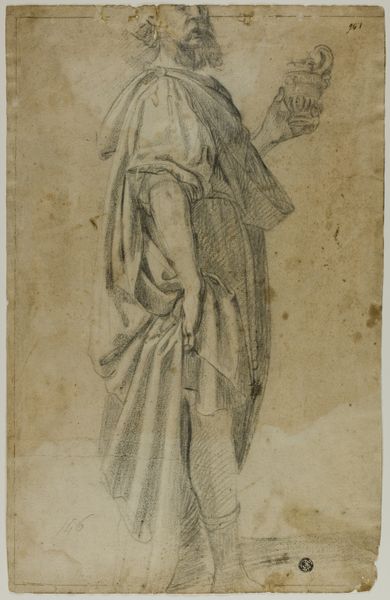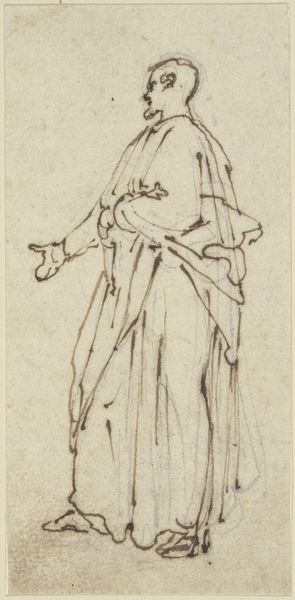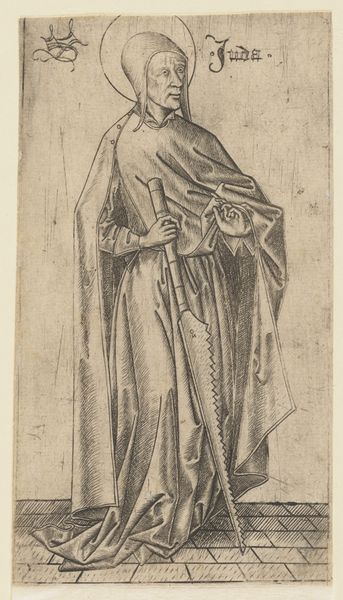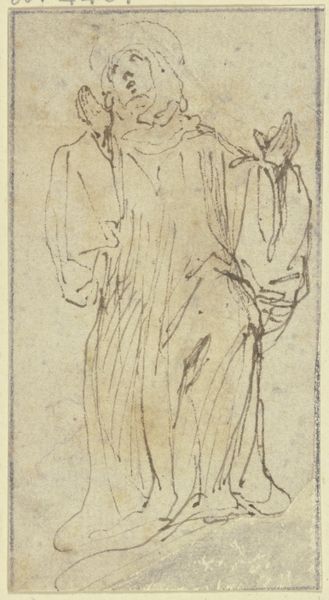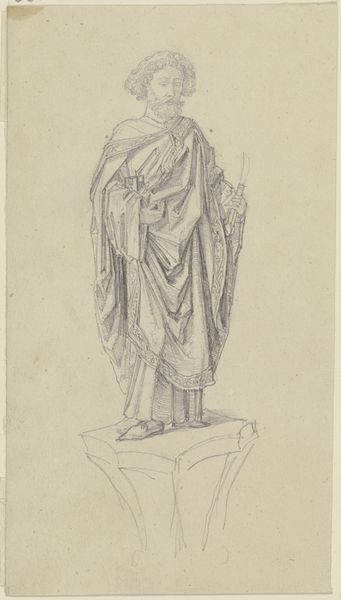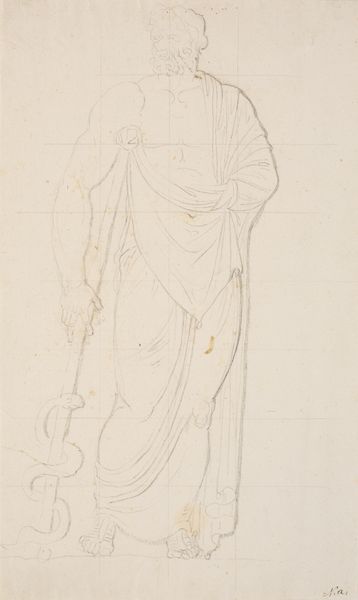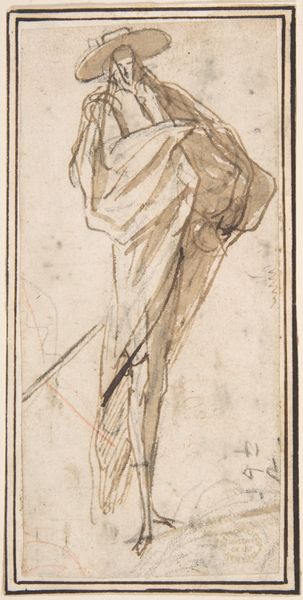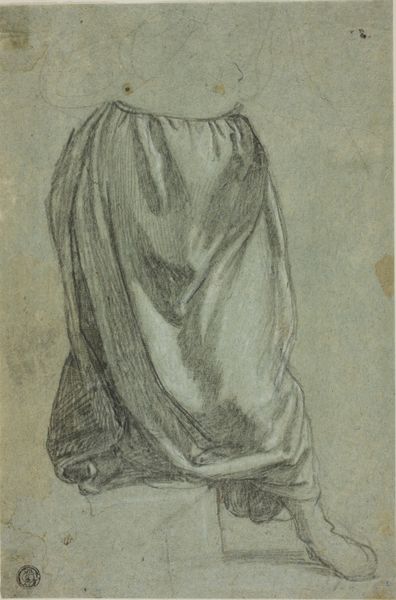
Standing Angel (recto); Study of Face and Drapery (verso) n.d.
0:00
0:00
drawing, print, paper, pencil, chalk
#
portrait
#
drawing
# print
#
pencil sketch
#
charcoal drawing
#
figuration
#
paper
#
11_renaissance
#
pencil
#
chalk
#
academic-art
Dimensions: 355 × 255 mm
Copyright: Public Domain
Editor: Here we have Domenico Fiasella's "Standing Angel," an undated drawing made with chalk and pencil on paper. I find the sketch-like quality of the drawing so interesting, almost like we are seeing the creative process unfold. What do you make of it? Curator: It's important to recognize the inherent formalism at play within the composition. Notice the subtle variations in line weight that create a sense of depth and volume despite the limited tonal range. The artist's hand is clearly visible. It also shows the process of academic art where an artist would sketch their ideas as a part of preparation for final works. Observe how the subject's pose – her hand placed gently across her chest – contributes to an internal dynamic separate from outward symbolism. How does the balance between the detailed areas, like the face and drapery, and the more loosely defined forms strike you? Editor: It's true. The angel's face does command attention, though the rapidly drawn lines surrounding her are compelling in their own right. Do you think the rough strokes of the chalk distract from the face, or does the angel remain at the piece's center despite this technique? Curator: Arguably, these broader, bolder marks focus one's attention, setting off the subject in a dramatic light. Note how this layering captures movement and a dynamism, enhancing the formal relationships between the different structural planes within the overall form. Editor: That makes sense. Thanks for guiding my eye; I was focusing too much on the surface. It really does underscore how important line and form are. Curator: Indeed. Attending to an artist's strategic choices—those compositional, tonal, and linear devices, permits entry to a deeper, more complex engagement with the aesthetic object.
Comments
No comments
Be the first to comment and join the conversation on the ultimate creative platform.
